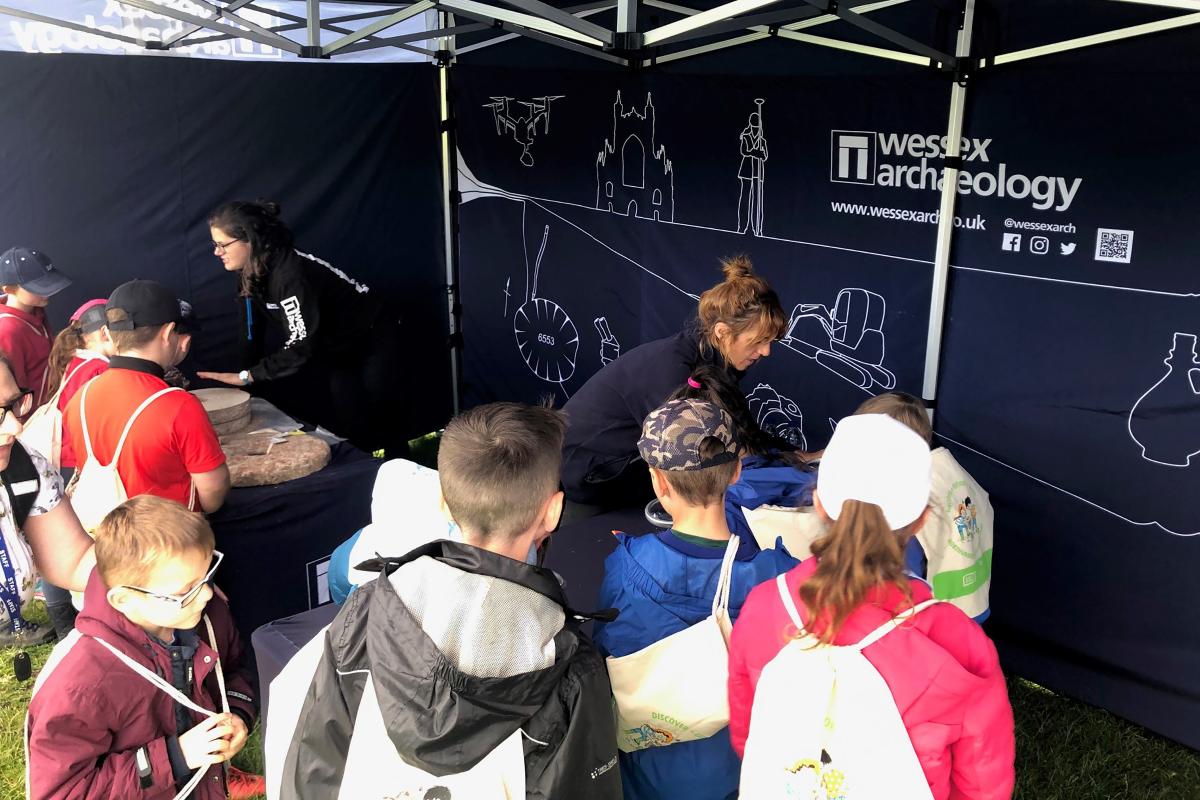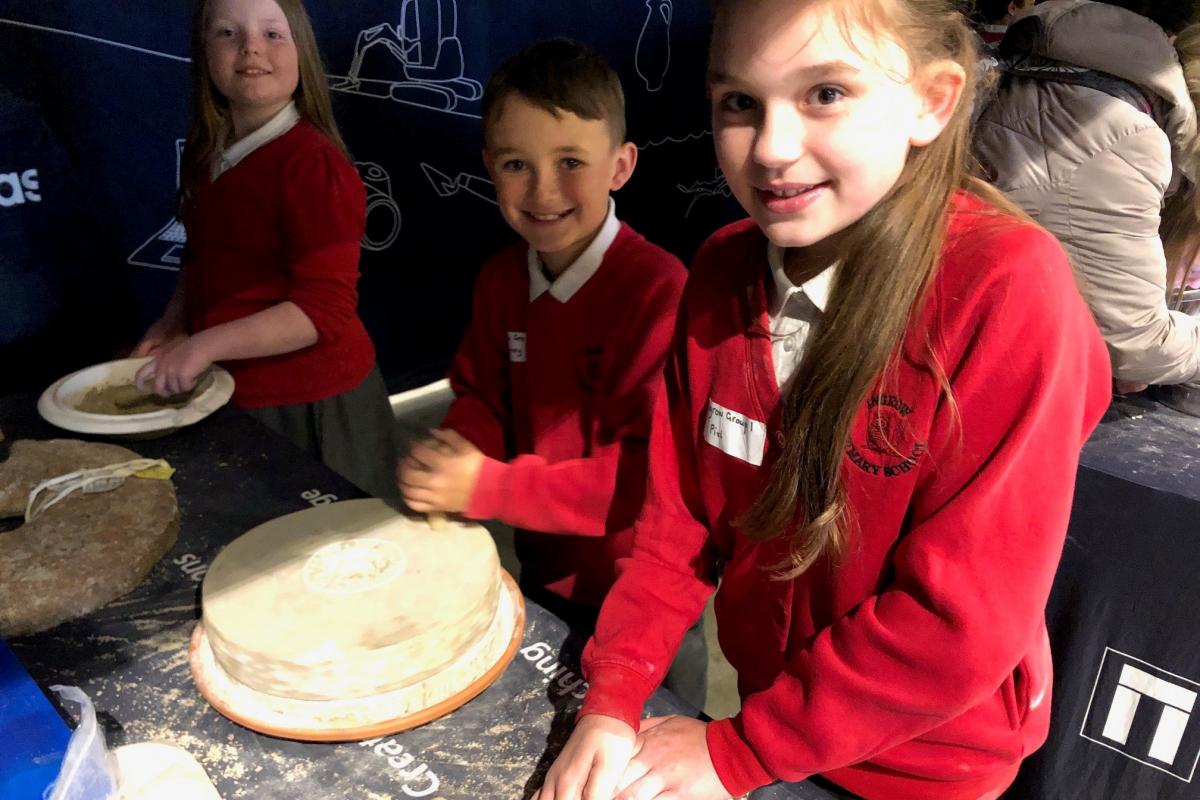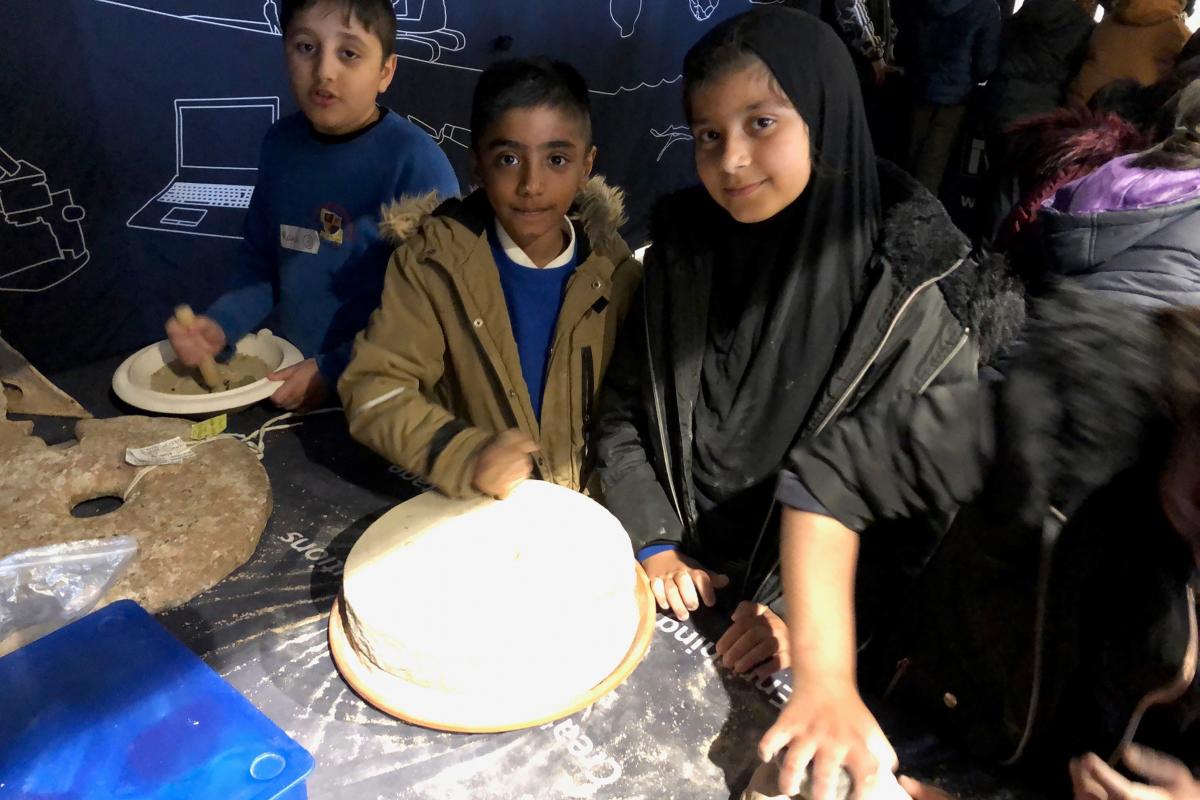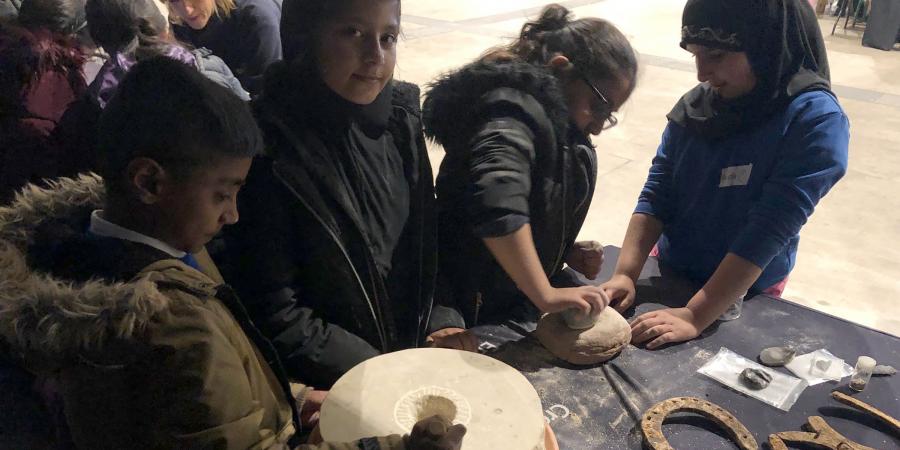Every year, across the UK, thousands of 8 to 11 year olds board coaches bound for fields and show grounds. The UK’s many agricultural societies invite these children to take part in days of activities and workshops that enable the children to get hands on with all aspects of the countryside.
As an educational charity that enables people to learn through archaeology, Wessex Archaeology has supported three such events this year in Kent, Yorkshire and Northumberland.
Our aim was to enhance children’s knowledge of the history of agriculture using archaeology and related subjects. We used three of our predesigned standard activities; chocolate geology, environmental sampling and querns. For these events, each activity has three differentiated learning outcomes.
Chocolate Geology, created for our attendance at Science Technology, Engineering and Maths (STEM) Festivals, enable children to understand that:
- Core sampling is a technique archaeologists use to gather evidence from deep under the ground
- That the ground is made up of layers and the word we use for these layers is stratigraphy
- That each layer has different properties, and that some layers are more likely to contain environmental archaeology than others.

Our environmental sampling activity is based on actual environmental sampling, adjusted for a learning environment. We create samples planted with grains, burnt grains, snail shells, pips and hazelnuts. The learning aims are:
- That snails are very choosey about where they live, so identifying snails can help us understand what plants were growing long ago
- That burnt food can survive for thousands of years (carbonization)
- That environmental archaeology is how we build an accurate picture of plants and natural landscapes in the past.
The querns activity uses a Roman style rotary quern and a prehistoric saddle quern to demonstrate how grain was ground in the past. Additionally, we use a Roman style mortaria to grind herbs and spices, to enable young people to experience the smells of the past. Using the querns helps children to understand that:
- Corn is grown to produce grain, which can be ground to make flour
- Grinding flour was a laborious, time consuming process
- That changes in world trade, climate and science have altered the types of food available in different periods of history and this can be evidenced from environmental investigations.

At these events, we submit in advance our workshop plans which are pre-booked by the schools attending. Our session is designed to fit the Key Stage 2 theme ‘Stone Age to Iron Age’ which fits the demographic of those attending, which is why we were fully booked!
Our attendance at these events has enable Wessex Archaeology to deliver 1697 hours of engagement time of which 99.6% was engagement to our gold or silver standard, meaning that each of the 1600 children we spoke to received either 15 or 45 minutes worth of input from one of the team.
My favorite conversation from the Yorkshire event was with a child of Pakistani descent from Bradford who taught me the Urdu word for a pestle and mortar. As a child from an urban area who was awed by the show with its birds of prey, sheep shearing and ferrets, I love that, through archaeology, she found commonality with her own life and using the mortaria. She was able to build empathy with people who lived thousands of years ago in a far-off country, through their shared use of a pestle and mortar.

Our attendance at these events enables Wessex Archaeology to meet its national ambition of using archaeology to help people better understand history and culture, and provides us with access to audiences we just can’t get to if we work solely from our offices.
